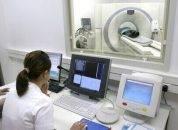Patients with peripheral vascular disease often experience femoropopliteal compromise. It is estimated that approximately 50% of lesions in this area are chronic total occlusions (CTO). Even though success rate has improved for peripheral CTO treatments, long term clinical and technical outcomes have not been fully determined yet. Prior research has looked into stenting outcomes in…
Use of IVUS in Complex PCI: Results according to Operator Experience
The use of ultravascular ultrasound (IVUS) to guide coronary angioplasty procedures (PCI) has been shown to reduce the risk of major adverse events in numerous randomized controlled studies, registries and meta-analysis. The current guidelines recommend the use of IVUS in left main disease and complex lesions. The proportion of complex PCI procedures has increased over…
Impella in High Risk Coronary Angioplasty before TAVR
The population is aging, which is closely related with the presence of aortic stenosis. This condition, as we know, is associated with coronary artery disease (CAD) approximately in 50% of cases. In high risk surgical patients, this calls for procedures such as percutaneous coronary intervention (PCI) and transcatheter aortic valve replacement (TAVR). PCI with ventricular…
Use of Drug-Coated Balloons in De Novo Lesions in Large Coronary Vessels
Drug-coated balloon (DCB) angioplasty is emerging as a novel treatment for coronary artery disease. Studies evaluating this strategy have demonstrated clinically non-inferior outcomes compared with those of drug-eluting stent (DES) implantation in patients with in-stent restenosis and de novo disease in small vessels. However, evidence for the use of DCBs in large coronary vessels is…
OCT-Guided PCTA: Does It Offer any Benefits?
For many years, percutaneous transluminal coronary angioplasty (PCTA) has expanded significantly worldwide. However, despite the demonstrated advantages of intravascular ultrasound (IVUS) in terms of minimal luminal area, reduced cardiovascular events, and restenosis, its use is not very common due to various reasons. On the other hand, optical coherence tomography (OCT) offers even higher resolution than…
5 Year Evolution of PCI vs CABG in Large Randomized Studies on Acute and Chronic Coronary Syndrome
Left main lesions in acute coronary syndrome (ACS) represent a major risk and, at present, the best revascularization strategy is a matter of debate. Though many studies and registries have excluded this group of patients, there is data on the pros and cons of both percutaneous coronary intervention (PCI) and cardiac artery bypass graft (CABG). …
Post PCI Angina: Inevitable or Avoidable?
Predictors of post PCI angina Among the complications of ischemic cardiomyopathy stenting, those called chronic, with significant functional and mental compromise, might affect patient quality of life. This can be observed in different scenarios, such as instent restenosis and post PCI angina. This kind of complications is associated with anxiety and depression at long term. …
CTO: Length’s Impact on Success
The rise of chronic total occlusions (CTO) percutaneous coronary interventions (PCI) goes hand in hand with technological development, through still posing a great challenge, one not exactly exempt from complications. An important criterion to successful CTO PCI is length: ≥20 mm lesions lower the odds, according to J-CTO Score. However, increasing operator experience and the…
Left Main Revascularization: 12 Year Registry in Canada
The current indication for severe left main lesion continues to be coronary artery bypass graft surgery (CABG) but percutaneous coronary intervention (PCI) has come far in this territory thanks to increasing operator experienced and the use of IVUS during procedures. At present, left main disease have a Class IIa indication in the American guidelines when…
Stent Revascularization in Femoropopliteal Disease: An Analysis of Clustered Randomized Trials
A study compared pooled data of claudication and critical ischemia patients treated with stenting vs. by-pass surgery in femoropopliteal disease. The main objective of revascularization in femoropopliteal disease is to improve the quality of life and functional capacity of claudication patients who did not respond to medical treatment, and to save the affected limb in…









